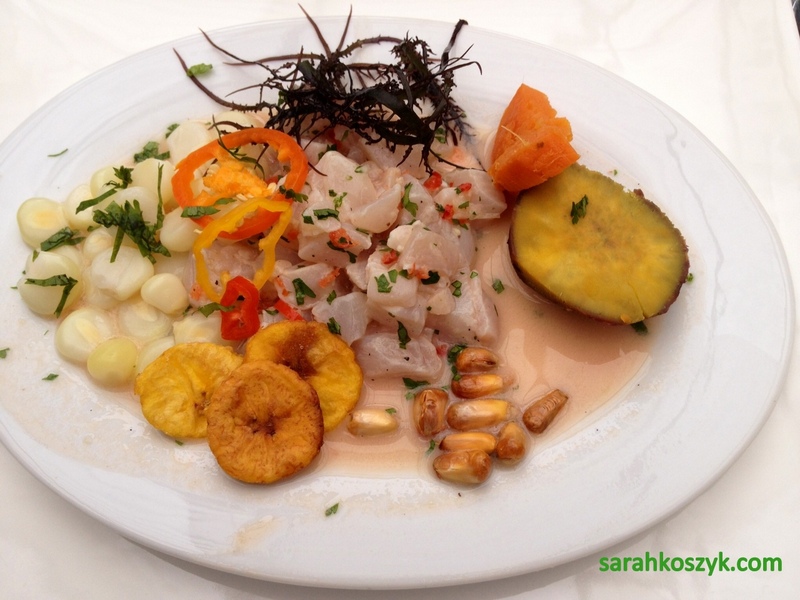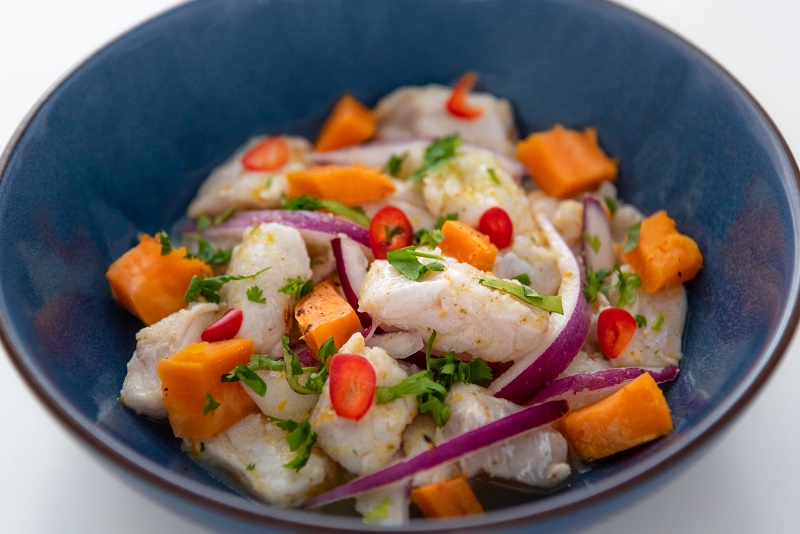How to Make the Best Peruvian Ceviche with Fresh Fish

Imagine yourself on a sun-kissed Peruvian beach, the salty breeze whispering through your hair, and the tantalizing aroma of fresh seafood wafting from a nearby cevichería. Peruvian ceviche, a dish that marries the freshest seafood with a zesty lime marinade, is a culinary masterpiece that transports you to the vibrant heart of Peruvian cuisine. Today, we're going to guide you through creating the best Peruvian ceviche recipe with fresh fish, right in your own kitchen. Are you ready to embark on this gastronomic adventure?
The Essence of Traditional Peruvian Ceviche
Peruvian ceviche is more than just a dish; it's a cultural icon. This traditional delicacy is a harmonious blend of fresh seafood, lime juice, red onions, chili peppers, and cilantro. The secret to its success lies in the quality of the ingredients and the perfect balance of flavors. Let's dive into the essential components that make up this culinary gem.
Fresh Seafood: The Heart of Ceviche
The star of any ceviche is undoubtedly the fresh seafood. Whether you opt for firm white fish like sea bass or sole, or go for a mix of seafood like shrimp and scallops, the key is freshness. Visit your local fish market or seafood counter and ask for the freshest catch of the day. The quality of your fish will make or break your ceviche.
Lime Marinade: The Magic Ingredient
The lime marinade is the alchemist's potion that transforms raw fish into a delectable dish. The acid in the lime juice "cooks" the fish, changing its texture and infusing it with a tangy, refreshing flavor. Freshly squeezed lime juice is a must; bottled juice just won't cut it.
Aromatics and Spices: The Supporting Cast
Red onions, chili peppers, and cilantro provide the aromatic backbone of ceviche. Red onions add a crisp, slightly sweet note, while chili peppers bring the heat. Cilantro adds a burst of freshness that ties everything together. Don't skimp on these ingredients; they're crucial for achieving that authentic Peruvian flavor.
Step-by-Step Guide to Making the Best Peruvian Ceviche
Are you ready to get your hands dirty? Let's walk through the process of making the best Peruvian ceviche recipe with fresh fish.
Ingredients
- 1 lb fresh white fish (such as sea bass or sole), cut into small cubes
- 1 cup freshly squeezed lime juice
- 1 small red onion, finely chopped
- 1-2 aji limo or serrano chili peppers, finely chopped (adjust to taste)
- 1 bunch fresh cilantro, finely chopped
- Salt to taste
- Optional garnishes: sliced avocado, sweet potato, corn on the cob
Instructions
Prepare the Fish: Start by cutting your fresh fish into small cubes. Place the cubes in a non-reactive bowl (glass or stainless steel works best).
Marinate the Fish: Pour the freshly squeezed lime juice over the fish, ensuring all pieces are well coated. Cover the bowl and refrigerate for about 20-30 minutes. The fish will turn opaque and firm up as it "cooks" in the lime juice.
Add the Aromatics: While the fish is marinating, finely chop the red onion, chili peppers, and cilantro. Add these to the fish mixture once it has finished marinating.
Season to Taste: Add salt to taste. Mix everything well to ensure all the flavors are evenly distributed.
Serve Immediately: Ceviche is best enjoyed fresh. Serve it chilled, garnished with sliced avocado, sweet potato, and corn on the cob if desired.

Tips for Perfecting Your Homemade Ceviche
Creating the best Peruvian ceviche recipe with fresh fish requires a bit of finesse. Here are some tips to help you perfect your homemade ceviche:
Choose the Right Fish
Opt for firm white fish like sea bass, sole, or halibut. These types of fish hold up well to the lime marinade and have a mild flavor that complements the other ingredients.
Freshness is Key
Always use the freshest seafood you can find. The quality of your fish will significantly impact the final dish. If you're unsure about the freshness, ask your fishmonger for advice.
Balance the Flavors
The balance of flavors is crucial in ceviche. Taste as you go and adjust the seasoning as needed. Too much lime can make the dish overly tart, while too little can leave the fish undercooked.
Serve It Chilled
Ceviche is best enjoyed cold. Serve it straight from the fridge to ensure the flavors are at their peak.

Conclusion
Creating the best Peruvian ceviche recipe with fresh fish is a culinary journey that brings the vibrant flavors of Peru right to your table. With fresh seafood, a zesty lime marinade, and a medley of aromatic ingredients, you can recreate this traditional delicacy in your own kitchen. Whether you're a seasoned chef or a culinary novice, this dish is sure to impress. So, what are you waiting for? Grab your apron and let the adventure begin!
FAQs
What type of fish is best for ceviche? Firm white fish like sea bass, sole, or halibut are excellent choices for ceviche. They hold up well to the lime marinade and have a mild flavor that complements the other ingredients.
How long should the fish marinate in the lime juice? The fish should marinate in the lime juice for about 20-30 minutes. This allows the acid to "cook" the fish, turning it opaque and firming up its texture.
Can I use bottled lime juice for ceviche? Freshly squeezed lime juice is essential for the best flavor in ceviche. Bottled lime juice often contains preservatives and lacks the fresh, vibrant taste of fresh lime juice.
What can I serve with ceviche? Ceviche is often served with sliced avocado, sweet potato, and corn on the cob. These accompaniments provide a contrast in texture and flavor that complements the ceviche perfectly.
How should I store leftover ceviche? Leftover ceviche should be stored in an airtight container in the refrigerator. It will keep for up to 24 hours, but it's best enjoyed fresh.
0 Response to "How to Make the Best Peruvian Ceviche with Fresh Fish"
Post a Comment